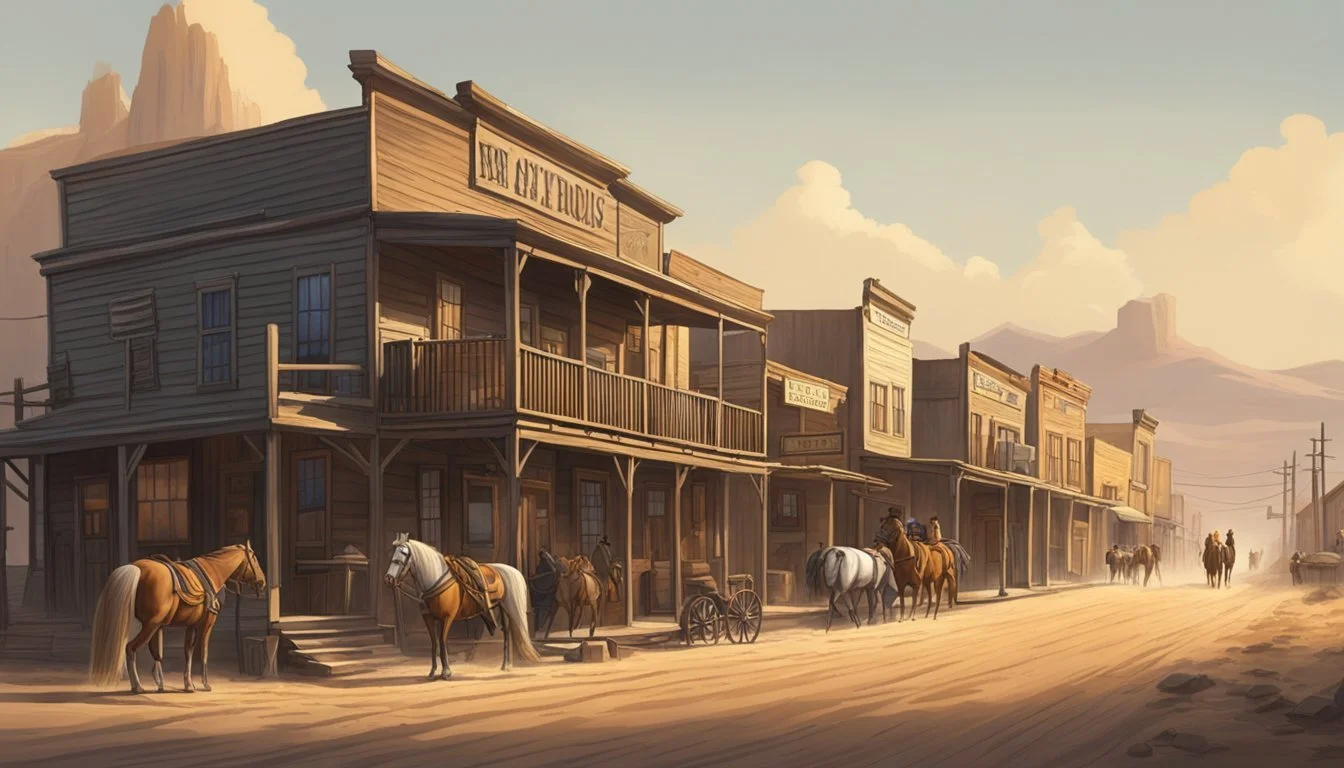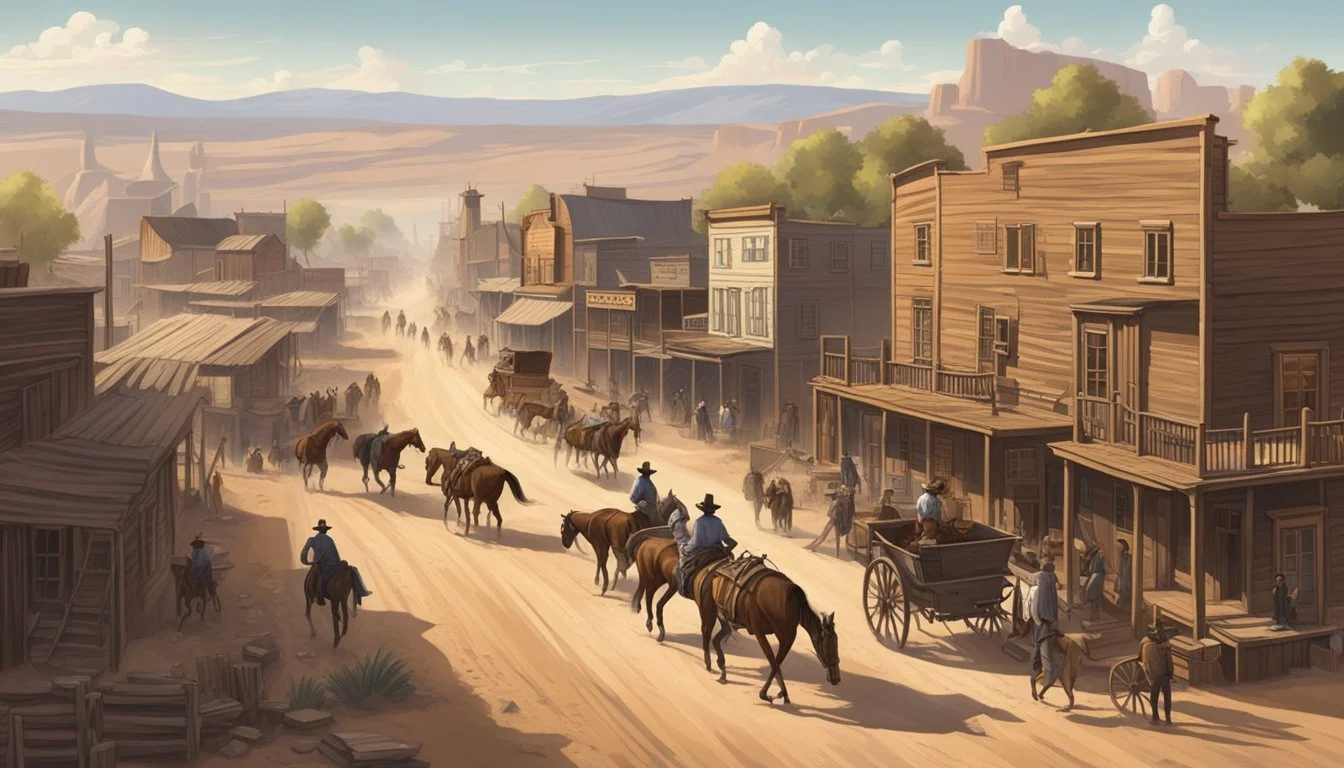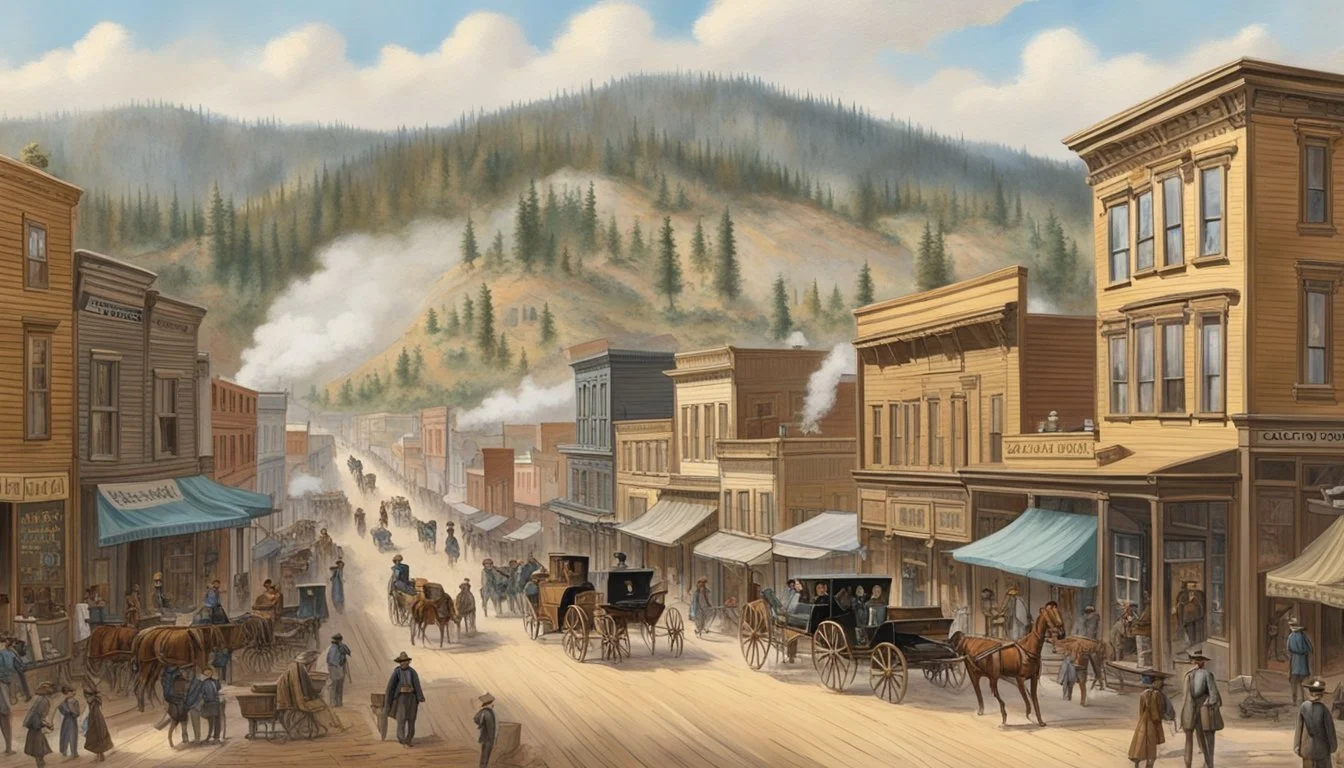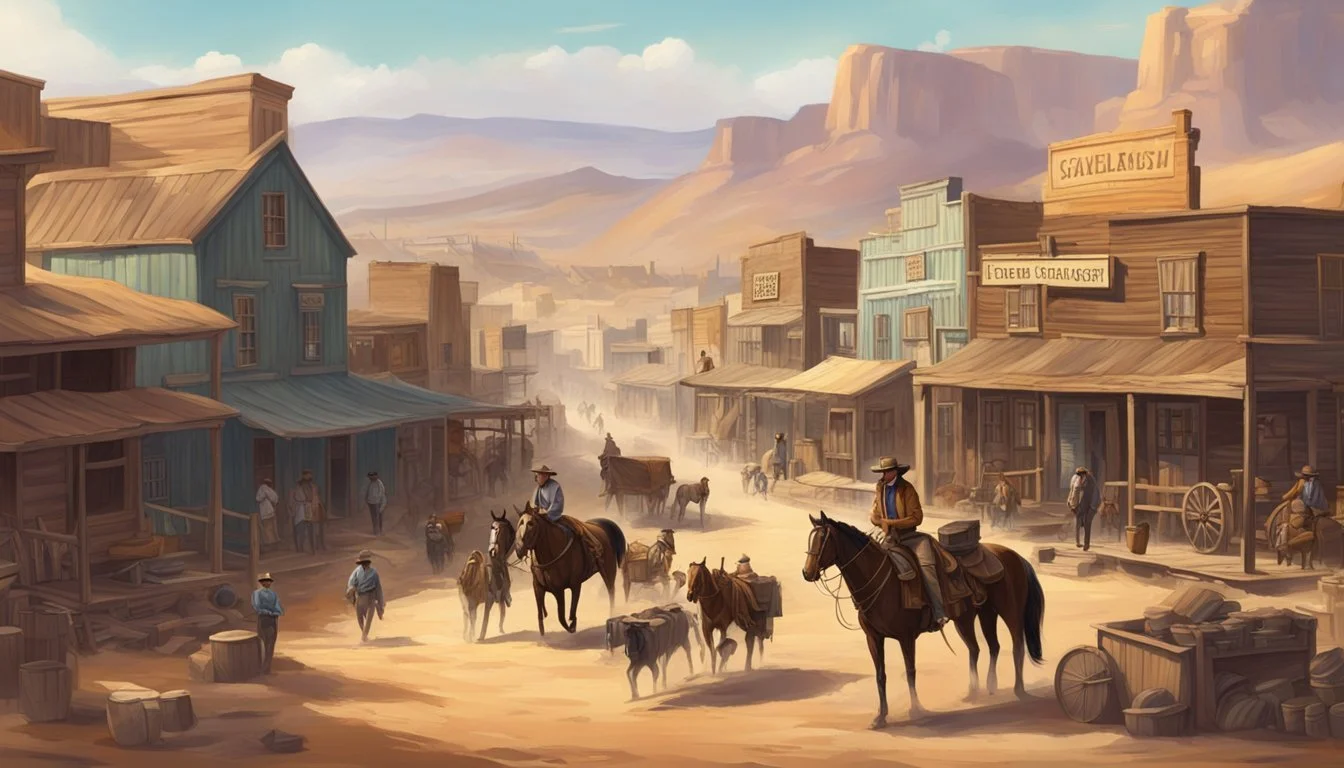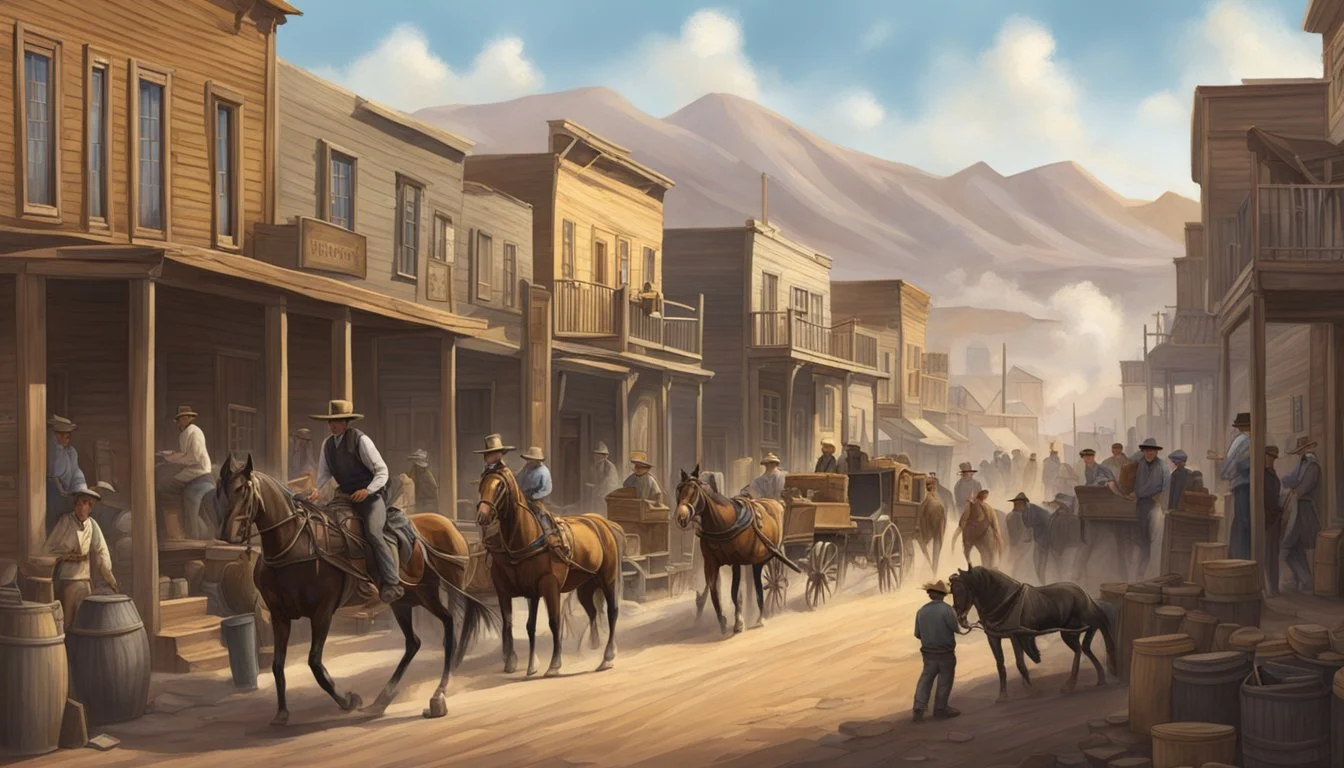Deadwood: The Real Wild West Figures Who Inspired the Series
Historical Roots of HBO's Gritty Western Drama
Deadwood captivated audiences with its gritty portrayal of the Old West, blending historical figures with fictional characters. Set in the lawless town of Deadwood, South Dakota during the 1870s gold rush, the HBO series drew inspiration from real-life events and people. Many of the show's main characters were based on actual historical figures who shaped the frontier town's tumultuous early years.
The series creators meticulously researched Deadwood's history to bring authenticity to the screen. Characters like Al Swearengen, Seth Bullock, and Wild Bill Hickok were all real individuals who played significant roles in the town's development. While the show took creative liberties with some aspects of their lives, it strived to capture the essence of these larger-than-life personalities and the challenges they faced in the untamed West.
Deadwood's commitment to historical accuracy extended beyond its characters to the town's setting and events. The series depicted real occurrences like the arrival of the telegraph and the devastating fires that threatened the burgeoning settlement. By interweaving fact with fiction, Deadwood offered viewers a compelling glimpse into a pivotal period of American history, bringing the Wild West to life in vivid detail.
Historical Context of Deadwood
The town of Deadwood emerged during a pivotal period in American westward expansion. Its rapid growth and lawless reputation exemplified the challenges and opportunities of frontier life in the late 19th century.
Gold Rush and the Formation of Deadwood
In 1874, gold was discovered in the Black Hills of Dakota Territory. This sparked a massive influx of prospectors and settlers to the area. Deadwood Gulch, named for the dead trees lining its slopes, became the site of a bustling mining camp in 1876.
Miners flocked to the region, defying treaties with Native American tribes. The promise of riches drew thousands, transforming the remote gulch into a rowdy boomtown seemingly overnight.
Deadwood: From Camp to Frontier Town
Deadwood quickly evolved from a primitive camp to a thriving frontier settlement. Tents gave way to wooden structures as businesses and services sprang up to cater to the miners.
Saloons, brothels, and gambling halls dominated the main street. Hotels, shops, and rudimentary government offices soon followed. The population swelled, reaching an estimated 5,000 by 1877.
Despite its rapid growth, Deadwood faced numerous challenges. Fire and disease were constant threats in the cramped, wooden town.
Law and Order in the Dakota Territory
Deadwood's early days were marked by a lack of formal law enforcement. The town existed in a legal gray area, officially part of Native American lands.
This vacuum led to rampant crime and violence. Shootouts and murders were common occurrences. Vigilante justice often prevailed in the absence of official authority.
In 1877, Seth Bullock was appointed as the town's first sheriff. His efforts to bring order to Deadwood marked a turning point in the town's development. The appointment of judges and the establishment of courts gradually brought a semblance of law to the wild frontier town.
Main Historical Figures of Deadwood
Deadwood's reputation as a lawless frontier town was shaped by several larger-than-life personalities. These individuals left an indelible mark on the town's history and later inspired characters in the HBO series.
Wild Bill Hickok: The Legendary Gunslinger
James Butler "Wild Bill" Hickok arrived in Deadwood in 1876, already a famous gunfighter and lawman. His sharp-shooting skills and flamboyant personality made him a local celebrity.
Hickok frequented the No. 10 Saloon, often playing poker. On August 2, 1876, he was shot in the back of the head by Jack McCall while holding the infamous "Dead Man's Hand" - a pair of black aces and eights.
His death cemented his legendary status and contributed to Deadwood's notoriety. Hickok's brief time in the town left a lasting impact on its history and folklore.
Calamity Jane: Much More Than a Sharpshooter
Martha Jane Canary, better known as Calamity Jane, was a frontierswoman and scout. She arrived in Deadwood in 1876 as part of a wagon train, coinciding with Wild Bill Hickok's presence.
Jane claimed a close friendship with Hickok, though historical evidence suggests their relationship was brief. She worked various jobs, including nursing during a smallpox epidemic.
Her colorful personality and penchant for men's clothing made her a Deadwood fixture. Jane's skills as a scout and her unconventional lifestyle contributed to her lasting fame.
Seth Bullock: The Steadfast Marshal
Seth Bullock arrived in Deadwood in August 1876, seeking business opportunities. He quickly established a hardware store with his partner Sol Star.
After Wild Bill Hickok's murder, Bullock became Deadwood's first sheriff. He earned a reputation as a no-nonsense lawman who brought order to the chaotic town.
Bullock later built the luxurious Bullock Hotel, which still stands today. His leadership and business acumen played a crucial role in Deadwood's transformation from a mining camp to a respectable town.
Al Swearengen: The Gem Theater's Infamous Owner
Ellis Albert "Al" Swearengen opened the notorious Gem Theater in 1877. The establishment functioned as a saloon, dance hall, and brothel.
Swearengen was a powerful and ruthless businessman. He exerted significant influence over Deadwood's politics and economy through bribery and intimidation.
The Gem Theater became Deadwood's most profitable business. Despite its unsavory reputation, it played a central role in the town's social life for over a decade.
Swearengen's complex character and business dealings made him one of Deadwood's most controversial figures.
Deadwood in Popular Culture
Deadwood's legacy extends far beyond its historical roots, captivating audiences through its portrayal in modern media. The town's colorful past and larger-than-life characters have become a source of fascination for viewers worldwide.
HBO's Deadwood Series: A Cult Phenomenon
HBO's Deadwood series, which ran for three seasons from 2004 to 2006, brought the gritty realism of the Old West to television screens. The show's raw depiction of frontier life, coupled with its intricate plotlines and memorable characters, quickly garnered a devoted following.
Deadwood's unique blend of historical accuracy and dramatic license set it apart from typical Western fare. The series' distinctive dialogue, peppered with profanity and period-accurate slang, became a hallmark of its style.
Despite its short run, Deadwood's impact on television drama was significant. It paved the way for more complex, character-driven historical dramas and cemented its place as a cult classic.
Casting the Real Wild West: Portraying Historical Figures
The success of Deadwood owed much to its stellar cast and their portrayals of real-life figures. Ian McShane's performance as the ruthless Al Swearengen earned widespread acclaim, bringing depth to a character known for his cunning and cruelty.
Timothy Olyphant's Seth Bullock captured the stoic lawman's struggle to maintain order in a lawless town. Other standout portrayals included Molly Parker as Alma Garret and Robin Weigert as Calamity Jane.
The show's creators drew from historical accounts to breathe life into lesser-known figures. Characters like Mr. Wu and Trixie added richness to the town's tapestry, reflecting the diverse population of the real Deadwood.
Garret Dillahunt's versatility shone through his portrayal of two different characters across the series, showcasing the depth of talent among the cast.
The Cultural Tapestry of Deadwood
Deadwood's vibrant cultural landscape was shaped by diverse influences and activities. The town's social fabric intertwined gambling, opium dens, and the presence of women in various roles.
Life in the Gambling Halls and Saloons
Gambling halls and saloons formed the heart of Deadwood's social scene. These establishments buzzed with activity day and night, offering games of chance like poker, faro, and roulette. Patrons from all walks of life rubbed elbows at the gaming tables.
The most popular saloons, like the Gem Theater, served as meeting places for miners, merchants, and travelers. Alcohol flowed freely, fueling boisterous conversations and occasional brawls. Many saloons featured live entertainment, including music and dancing girls.
Deadwood's Chinatown: A Glimpse into Opium Dens
Deadwood's Chinatown emerged as a distinct cultural enclave. Chinese immigrants established businesses, including laundries, restaurants, and shops. Opium dens became a controversial aspect of this community.
These dens operated discreetly, offering patrons a place to smoke opium. While some viewed them as dens of vice, others saw them as social spaces. The practice attracted both Chinese and non-Chinese customers, creating a complex cultural dynamic.
Law enforcement often turned a blind eye to opium use, focusing instead on more violent crimes. This tolerance contributed to Chinatown's unique position in Deadwood's social landscape.
The Role of Women: Painted Ladies and Beyond
Women in Deadwood occupied diverse roles, challenging traditional gender norms. "Painted ladies," or prostitutes, were a visible presence in the town's red-light district. Many worked in brothels or as independent operators, catering to the predominantly male population.
Not all women in Deadwood were involved in sex work. Some ran businesses, worked as teachers, or managed households. Notable figures like Calamity Jane defied gender expectations, adopting traditionally masculine attire and behaviors.
The presence of women, regardless of their occupation, played a crucial role in civilizing the frontier town. They contributed to the establishment of schools, churches, and other social institutions that helped transform Deadwood from a rough mining camp into a more settled community.
Analyzing the Historical Accuracy
Deadwood blends fact and fiction to create a compelling narrative. The show's creators meticulously researched the era, incorporating real historical figures and events while taking some creative liberties.
Fact Versus Fiction: How Accurate is Deadwood?
Deadwood strikes a balance between historical truth and dramatic storytelling. Many key events and characters are based on real people and occurrences from the 1870s Dakota Territory. The show accurately depicts the town's growth from a mining camp to a bustling frontier settlement.
The portrayal of figures like Seth Bullock and Al Swearengen closely aligns with historical accounts. However, some storylines and character interactions are fictionalized for dramatic effect.
The series captures the lawless atmosphere and harsh realities of frontier life. It doesn't shy away from depicting violence, racism, and the struggles faced by marginalized groups.
David Milch and the Commitment to Period Detail
Creator David Milch invested significant effort in recreating the look and feel of 1870s Deadwood. The production team meticulously researched clothing, architecture, and daily life of the period.
Milch consulted historians and primary sources to ensure authenticity. Set designers built a detailed replica of the town, paying close attention to building materials and construction methods of the era.
The show's dialogue, while peppered with modern profanity, aims to capture the cadence and vocabulary of 19th-century speech. This commitment to detail extends to props, weapons, and even background activities in scenes.
The Real Stories Behind Deadwood's Characters
Many of Deadwood's central characters are based on real historical figures. Seth Bullock, Al Swearengen, and Calamity Jane were actual residents of the town during its gold rush period.
The show takes some liberties with timelines and relationships. For example, Wild Bill Hickok's death is accurately portrayed, but his friendship with Bullock is likely exaggerated.
Some characters, like Alma Garret, are fictional creations inspired by composite historical figures. These invented personas allow the writers to explore broader themes of frontier life.
The Portrayal of Native Americans and Other Ethnic Groups
Deadwood attempts to depict the complex racial dynamics of the frontier, including the treatment of Native Americans and Chinese immigrants. The show doesn't shy away from portraying the racism and exploitation prevalent in the era.
The series includes storylines involving conflicts with local Sioux tribes, reflecting real historical tensions. However, some critics argue that Native American characters are underrepresented.
The portrayal of Deadwood's Chinese community is more prominent. While the show depicts their exploitation, it also showcases their entrepreneurship and cultural practices. The character of Mr. Wu is based on a real Chinese businessman in Deadwood.
Deadwood's Legacy
Deadwood's impact extends far beyond its Wild West era, shaping both historical understanding and modern tourism. The town's colorful past continues to captivate audiences and draw visitors seeking to experience a piece of Old West history.
Historical Significance and Cultural Impact
Deadwood's legacy looms large in American folklore and popular culture. The town's reputation for lawlessness and larger-than-life characters has inspired numerous books, films, and TV series. The HBO show "Deadwood" brought renewed attention to the historical figures and events that shaped the town.
Deadwood's story highlights the complex realities of frontier life, challenging romanticized notions of the Old West. The town's rapid growth and eventual decline mirror broader patterns of Western expansion and development.
Historians continue to study Deadwood as a microcosm of 19th-century American society, examining issues of race, class, and gender on the frontier.
Tourism and Preservation of Deadwood Today
Deadwood has successfully leveraged its Wild West heritage to become a popular tourist destination. The town's well-preserved 19th-century architecture provides visitors with an authentic glimpse into the past.
The Adams Museum, founded in 1930, houses an extensive collection of Deadwood artifacts, including items belonging to famous residents like Wild Bill Hickok and Calamity Jane.
Preservation efforts have been crucial in maintaining Deadwood's historical character. The entire town was designated a National Historic Landmark in 1961.
Gaming revenues have funded restoration projects, helping to maintain the town's Old West appearance while supporting modern amenities.
Visitors can experience guided tours, reenactments, and themed events that bring Deadwood's colorful history to life.

